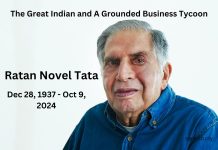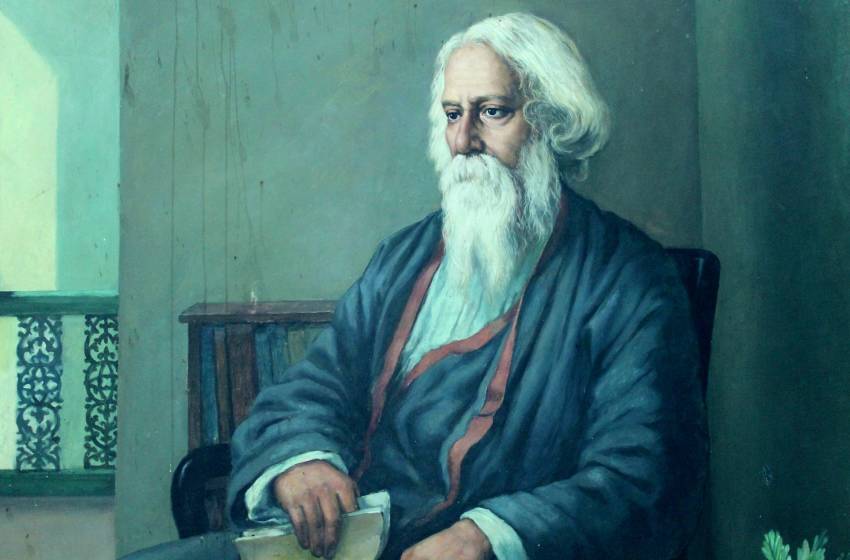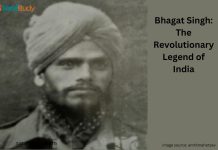Dr. A.P.J. Abdul Kalam was acknowledged with many prestigious awards including India’s highest civilian honor “Bharat Ratna” in the year 1997. Dr. A.P.J. Abdul Kalam was the 11th President of India, who was elected against Lakshmi Sehgal in the year 2002. Before taking administration as the President of India. He worked with a space organization, the Indian Space Research Organisation commonly known as (ISRO) and also at Defence Research and Development Organisation, also known as (DRDO) and designated as an aerospace engineer.
He was known as the Missile Man of India for his vital role in the nation’s civilian space program and military missile development. Also, He made some significant contributions to India’s Pokhran-II nuclear tests, in the year 1998.
A.P.J Abdul Kalam started his career as a scientist at the Aeronautical Development Establishment of the Defence Research and Development Organization (DRDO). He had also worked as the project director of India’s first Satellite Launch Vehicle (SLV-III) at ISRO.
In the 1990s he had worked as the (CSA) Chief Scientific Adviser to the Prime Minister before taking charge as the President of India in the year 2002.
Family History and Early Life
On 15 October in the year 1931, Dr. A.P.J Abdul Kalam was born to a Tamil Muslim family in Rameswaram. Later in Madras Presidency in British India, which is now known as Tamil Nadu. His father’s name was Jainulabdeen, he owns a boat and imam of a local mosque. His mother’s name was Ashiamma, she was a housewife.
Kalam was the youngest and he had five siblings. The eldest was a sister, named Asim Zohra, and three elder brothers, i.e Mustafa Kalam, Kasim Mohammed, and Mohammed Muthu Meera Lebbai Maraikayar. He was very close to his family and always supported them, though he lived a whole bachelor’s life.
His parents had been wealthy traders and landowners, with many properties and large plots of land. They trade groceries between the mainland and the island to and from Srilanka and also carry the pilgrims from the shore to Pamban Island. Their family had the title “Mara Kalam Iyakkivar” (wooden boat steerers). They were known as “Marker.”
But by the 1920s, the family business of Dr Kalam failed to result in the loss of his family wealth. So, to assist his family, Kalam started selling newspapers at an early age.
Kalam was always an average student during school days but was very hard working and obedient. Mathematics was his favorite subject.
Finished his matriculation from Schwartz Higher Secondary School, which is located in Ramanathapuram, and later he graduated in Physics from Saint Joseph’s College. Later, He moved to Madras to continue aerospace engineering at Madras Institute of Technology, in the year 1955.
Through his graduation, he has designated a project to design a low-level attack aircraft with other students. Their teacher had addressed them a tight deadline to complete this project. It was challenging. Abdul Kalam worked hard under pressure and finished his project within the specified period. The teacher was overwhelmed by the allegiance of Kalam.
Kalam always wanted to become a fighter pilot, but he got 9th position in the qualifiers list, and only eight vacancies were available in the IAF.
Education and Career
Kalam had finished his graduation in 1957 from the Madras Institute of Technology. In 1958, he joined the Aeronautical Development Establishment of the Defence Research and Development Organisation (DRDO) as a scientist.
In the beginning 1960s, he worked with the Indian National Committee for Space Research also known as INCOSPAR under the renowned space scientist Vikram Sarabhai.
After visiting Goddard Space Flight Centre in Greenbelt, Maryland, NASA’s Langely Research Centre in Hampton, Virginia, and Wallops Flight Facility in 1963-64, he had begun working on an expandable rocket project independently in 1965 at DRDO (Defence Research and Development Organisation).
He was not very happy with his work at DRDO. And when he got transfer orders to the ISRO in 1969, he became happy. He worked as the project director of the SLV-III that successfully deployed the Rohini satellite in near-earth orbit, in July 1980. It is India’s first indigenously created and produced satellite launch vehicle.
After receiving the government’s approval in 1969 he expanded the program to include more engineers. In the 1970s. He had made an endeavor to develop the Polar Satellite Launch Vehicle (PSLV) to enable India to launch its Indian Remote Sensing (IRS) satellite into Sun-Synchronous orbit, PSLV project was successful and on 20 September 1993, that was his first launch.
In the 1970s, Abdul Kalam guided two projects, i.e Project Devil and Project Valiant. Devil Project was a new liquid-fuelled missile project intended at producing a short-range surface-to- air missile. And this project was not successful and stopped in the 1980s, and later it started the development of the Prithvi missile. And the valiant project which was aimed at the development of the intercontinental ballistic missile was also not successful.
An Indian Ministry of Defence program, which was managed by DRDO in association with other government organizations, launched the Integrated Guided Missile Development Programme (IGMDP) in the early 1980s. Dr. Kalam was called to commence the project, and in 1983 he reverted to DRDO as the Chief Executive of IGMDP, in the year 1983.
The program is directed to the development of four projects i.e Short-range surface-to-surface missile (Prithvi), Short range low-level surface-to-air missile (Trishul), Medium range surface-to-air missile (Akash), and Third-generation anti-tank missile (Nag).
Following the leadership of Abdul Kalam, the project of IGMDP demonstrated to be successful by producing missiles like the first Prithvi missile in 1988 and after that the Agni missile in 1989. Due to his participation, he was known as the “Missile Man of India.”
In 1992, he was designated as the Scientific Adviser to the Defence Minister. Among the rank of a cabinet minister, in 1999, he was selected as the Principal Scientific Adviser to the Government of India.
Abdul Kalam performed a significant role in leading the Pokhran-II, a series of five nuclear bomb test explosions, in May 1998. With the completion of these tests. He received the status of a national hero, and then Prime Minister Shri Atal Bihari Vajpayee announced India a full-fledged nuclear state.
Not only this much, but A.P.J. Abdul Kalam in 1998 also recommended a countrywide plan called Technology Vision 2020 to make India a developed nation by the year 2020 and proposed nuclear empowerment, numerous technological innovations, improvement of agricultural productivity, etc.
The National Democratic Alliance (NDA) was in power and chose Dr. A.P.J. Abdul Kalam for the post of the President of India, in the year 2002. As a popular national figure, he won the presidential election very easily.
His years at the DRDO
As a scientist, his time at DRDO was utilized in focusing on research in the defense and space arena. In the beginning, he invented a small hovercraft and started working on an expandable rocket project autonomously. In 1969 he was moved to the Indian Space Research Organisation (ISRO) where he was the project head of India’s first Satellite Launch Vehicle (SLV-III). During this time he received the government’s approval to expand the program.
The Missile Developer
In 20 years, Dr. Kalam was successful to develop the Satellite Launch Vehicle (PSLV) & SLV-III projects. He also directed two projects which developed ballistic missiles from the technology of the SLV program, in the 1970s. Abdul Kalam was appointed as the Chief Executive by then Defence Minister R. Venkataraman of a project that served on the development of a quiver of missiles. A fund of 388 crores was designated for this mission named Integrated Guided Missile Development Programme (IGMDP). He developed many missiles beneath this mission including Agni and Prithvi.
Role in Pokhran-II
ABJ Kalam worked as the Chief Scientific Adviser to the Prime Minister and he worked as the Chief Project Coordinator of the Pokhran-II nuclear tests. The extensive media coverage of this the project made Kalam a well – known nuclear scientist.
During the Vajpayee government, APJ Abdul Kalam has got Bharat Ratna and performed a significant role in the testing of nuclear weapons in 1998.
Abdul Kalam as a President of India: From 2002 to 2007
- The NDA government introduced Kalam’s name for the presidential post to the Leader of Opposition, Congress President Sonia Gandhi, on 10 June 2002.
- Dr. Abdul Kalam worked as the President of India from 25 July 2002 to 25 July 2007. He was the first scientist and the first bachelor to maintain the Rashtrapati Bhawan.
- In the presidential election, he received approx. 922,884 votes and defeated Lakshmi Sehgal.
- He became the 11th President of India by displacing K.R Narayanan.
- Dr. Abdul Kalam got the prestigious Bharat Ratna and then became the third President to receive the highest civilian honor after Dr. Sarvapali Radhakrishnan in 1954 Dr. Zakir Hussain in 1963.
- Dr. Kalam was recognized as the People’s President.
- According to Dr. Kalam, the most difficult decision taken by him as the President was signing the bill of office of Profit.
- Over his five-year term, he endured devoted to his vision of transforming India into a developed nation.
- He was still criticized for his inaction to determine the fate of 20 aid requests out of 21, including that of the Kashmiri Terrorist Afzal Guru, who was convicted for the parliament attacks in December 2001.
- He chose not to contest the Presidential election again in 2007 and moved down as the President on 25 July 2007.
Post Presidency
- Information Technology at the International Institute of Information Technology, Hyderabad, and at Banaras Hindu University and Anna University was developed by Dr. Abdul Kalam.
- Dr. Abdul Kalam was examined by civil groups over his stand on Koodankulam Nuclear Power Plant as he had encouraged the establishment of the nuclear power plant and was accused of not speaking with the local people, in 2011.
- With a central idea for defeating corruption, a program named ‘What Can I Give Movement’ was started for the Indian Youth.
A.P.J. Abdul Kalam: Death
- Dr. Abdul Kalam was giving a lecture at IIM Shillong where he grieved a heart attack, and his condition became critical, so he was shifted to Bethany Hospital where after that, he died of cardiac arrest, on 27 July 2015. A.P.J. Abdul Kalam’s last words, to Srijan Pal Singh, were “Funny guy! Are you doing well?”
- The late president was laid to rest at Rameshwaram’s Pei Karumbu Ground with State honors, on 30 July 2015. About 350,000 people had attended the last ceremony, including the Prime Minister of India, the Governor of Tamil Nadu, and the Chief Minister of Karnataka, Kerala, and Andhra Pradesh.
- The most honored death in the country and worldwide is of Dr. A.P.J Abdul Kalam. World student day is celebrated on his birthday. Abdul Kalam has the best example for a living.
A.P.J. Abdul Kalam National Memorial
In the remembrance of late President Dr. A.P.J Abdul Kalam, a statue was built on his name at Pei Karumbu, in the island town of Rameswaram, Tamil Nadu, India. It was inaugurated by the Prime Minister of India, Narendra Modi, on 27 July 2017.
In the memorial, numerous models of rockets and missiles are stored which shows the work of Dr. Abdul Kalam. Also, some acrylic paintings about his life are presented along with hundreds of portraits that describe the life of Dr. Kalam.
At the entrance of the monument, a statue of Dr. Kalam was set showing him playing Veena a musical instrument. Including these two more statues are there in sitting and standing posture.
A.P.J. Abdul Kalam: Awards and Achievements
- In 1981, Dr. A.P.J. Abdul Kalam received Padma Bhushan from the Govt. of India.
- In 1990, Dr. Kalam received Padma Vibhushan from the Govt. of India.
- In 1994 and 1995, Distinguished Fellow and Honorary Fellow through Institute of Directors India and National Academy of Medical Sciences.
- In 1997, he got Bharat Ratna from the Government of India and the Indira Gandhi Award for National Integration from the Indian National Congress.
- In 1998, The Government of India awarded him with the Veer Savarkar Award.
- In 2000, Alwars Research Centre awarded him with the Ramanujan Award, Chennai.
- In 2007, he was acknowledged with the King Charles II Medal by the Royal Society, U.K., and Doctorate of Science from the University of Wolverhampton, UK.
- In 2008, he got the Hoover Medal bestowed by ASME Foundation, USA, and obtained a Doctor of Engineering from Nanyang Technological University, Singapore.
- In 2009, The California Institute of Technology, U.S.A, bestowed Kalam with the International von Karman Wings Award, Hoover Medal by ASME Foundation, USA, and Honorary Doctorate by Oakland University.
- In 2010, Doctor of Engineering via the University of Waterloo.
- In 2011, The IEEE acknowledged Kalam with IEEE Honorary Membership.
- In 2012, Doctor of Laws by Simon Fraser University.
- In 2013, The National Space Society awarded him with the Von Braun Award.
- In 2014, Doctor of Science via Edinburgh University, UK.
- Dr. Kalam was the receiver of privileged doctorates from 40 universities.
- Dr. Kalam’s 79th birthday was known as World Student’s Day by the United Nations. He was further chosen for the MTV Youth Icon of the Year in 2003 and 2006.
- Following his death, he took several donations like the Tamil Nadu State Government on 15 October that is on his birthday declared to be recognized across the state as “Youth Renaissance Day”. Moreover, the State Government instituted the Dr. A.P.J Abdul Kalam Award organizing an 8 gm gold medal, a certificate, and Rs 500,000.
- On Independence Day, from 2015, the award will be bestowed annually to the citizens of the state with the achievements in strengthening scientific growth, the humanities, or the well-being of students.
- Not only this, on 15 October 2015 the 84th anniversary of Kalam’s birth, Narendra Modi, the Prime Minister of India also delivered postage stamps honoring Kalam at DRDO Bhawan in New Delhi.
- A new bacterium as the filters of the International Space Station (ISS) called it Solibacillus Kalami to acknowledge the late President Dr. Abdul Kalam was determined by the Researchers at the NASA Jet Propulsion Laboratory.
A.P.J. Abdul Kalam: Educational and Scientific Institutions
Numerous educational, scientific institutions and some places are named in honor of Dr. Abdul Kalam. They are as listed below:
- At A.P.J. Abdul Kalam’s funeral, By the Bihar State Govt., an agricultural college at Kishanganj, in Bihar, was renamed as the “Dr. Kalam Agricultural College, Kishanganj”.
- UPTU (i.e. Uttar Pradesh Technical University) was renamed “A.P.J. Abdul Kalam Technical University” via the Uttar Pradesh state govt.
- In Kollam city, Kerala, Abdul Kalam Memorial Travancore Institute of Digestive Diseases, a new research institute, is associated with the Travancore Medical College Hospital.
- In September 2014, India and the US started the Fulbright-Kalam Climate Fellowship. The fellowship will be managed by the binational US-India Educational Foundation (USIEF) following the Fulbright program.
- Headquartered at Thiruvananthapuram, Kerala Technological University, where Kalam lived for years, that was renamed to A.P.J. Abdul Kalam Technological University later his death.
A.P.J. Abdul Kalam Books
Year | Name of the Books |
2015 | Advantage India: From Challenge to Opportunity by A.P.J. Abdul Kalam and Srijan Pal Singh, Transcendence: My Spiritual Experiences with Pramukh Swamiji (co-authored with Arun Tiwari,) and Reignited: Scientific Pathways to a Brighter Future by A.P.J. Abdul Kalam and Srijan Pal Singh |
2014 | Governance for growth in India and - A Manifesto for Change: A Sequel to India 2020 (co-authored with V. Ponraj, 2014) |
2013 | My Journey: Transforming Dreams into Actions |
2012 | Turning Points: A Journey Through Challenges |
2011 | You Are Born To Blossom: Take My Journey Beyond (co-authored with Arun Tiwari, Envisioning an Empowered Nation and Target 3 Billion by A.P.J. Kalam and Srijan Pal Singh. |
2007 | Inspiring Thoughts |
2005 | Mission India |
2004 | The Luminous Sparks |
2002 | Ignited Minds: Unleashing the power within India tells about the dream of Dr. Kalam for Developed India. |
1998 | India 2020:A Vision for the New Millennium (co-authored Yagnaswami Sundara Raja) |
1999 | Wings of Fire: An Autobiography |
Biographies on A.P.J. Abdul Kalam
Year | Biographies |
2009 | ‘My Days With Mahatma Abdul Kalam’ ( by Fr A K George). |
2008 | A Little Dream (Documentary film) by P. Dhanapal and The Kalam Effect: My Years with the President by PM Nair. |
2002 | A.P.J.Abdul Kalam: The Visionary of India by K Bhushan and G Katyal, President A.P.J. Abdul Kalam by R K Pruthi and Eternal Quest: Life and Times of Dr. Kalam by S Chandra. |
A.P.J. Abdul Kalam: Legacy
Dr. Abdul Kalam was the youngest child in his family and was confined to his parents and his brothers and sisters. He never married and assisted his relatives whole life. He had a few properties including veena and a collection of books. Dr. Abdul Kalam was a kind-hearted man, a vegetarian.
He would do namaaz every day but also read Bhagwat Gita. For him, religion was a private matter, and used to insist that one should not make it a matter of ceremony and show. He used to say in your dealings with the society you have to be a humanist. Dr. Kalam often used to cite the story of how his mentor Vikram Sarabhai required church land for scientific research and got it because the bishop believed that both science and spirituality ask the Almighty’s blessings for human success, mind, and body.
While giving a lecture at the Indian Institute of Management Shillong on 27 July 2015, he failed and was rushed to the Bethany Hospital, where he was confirmed dead of cardiac arrest and on 30 July 2015 last rituals were performed at Pei Karumbu Island, Rameswaram.




